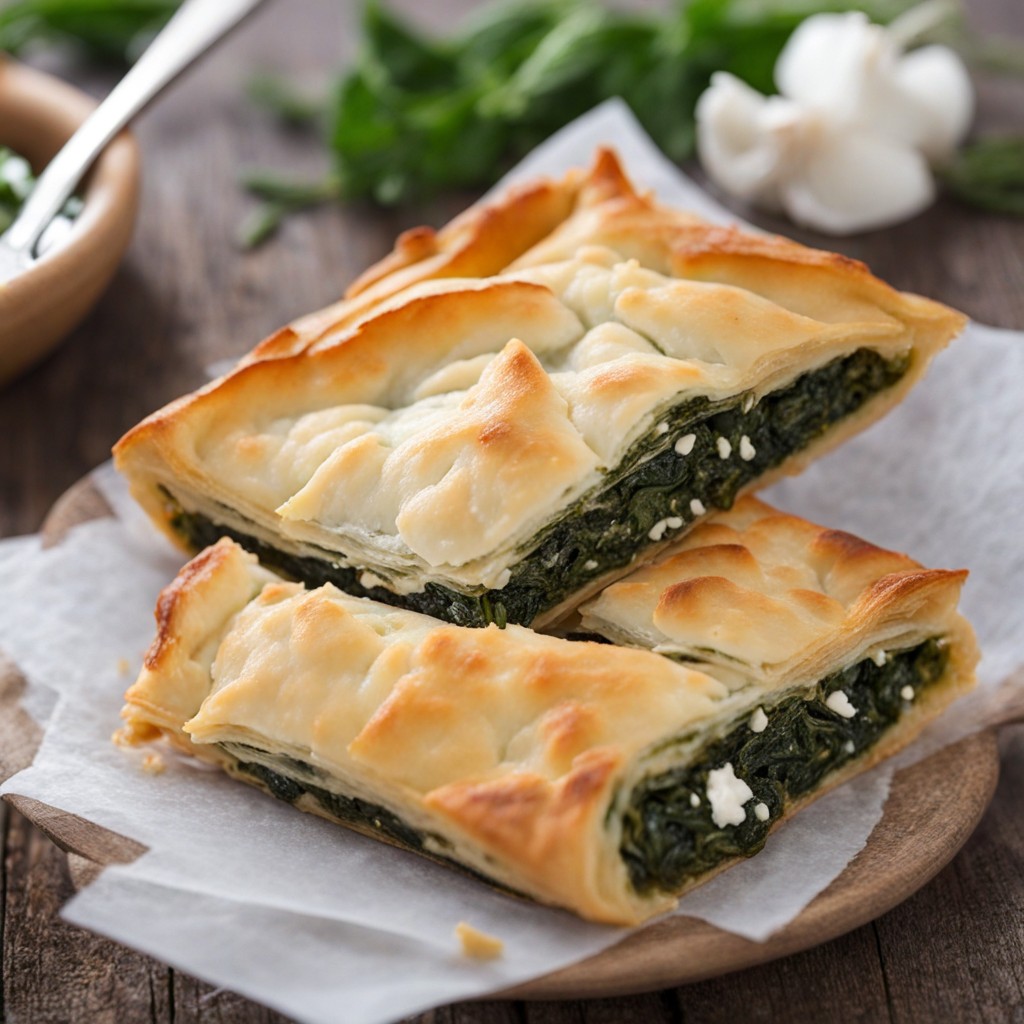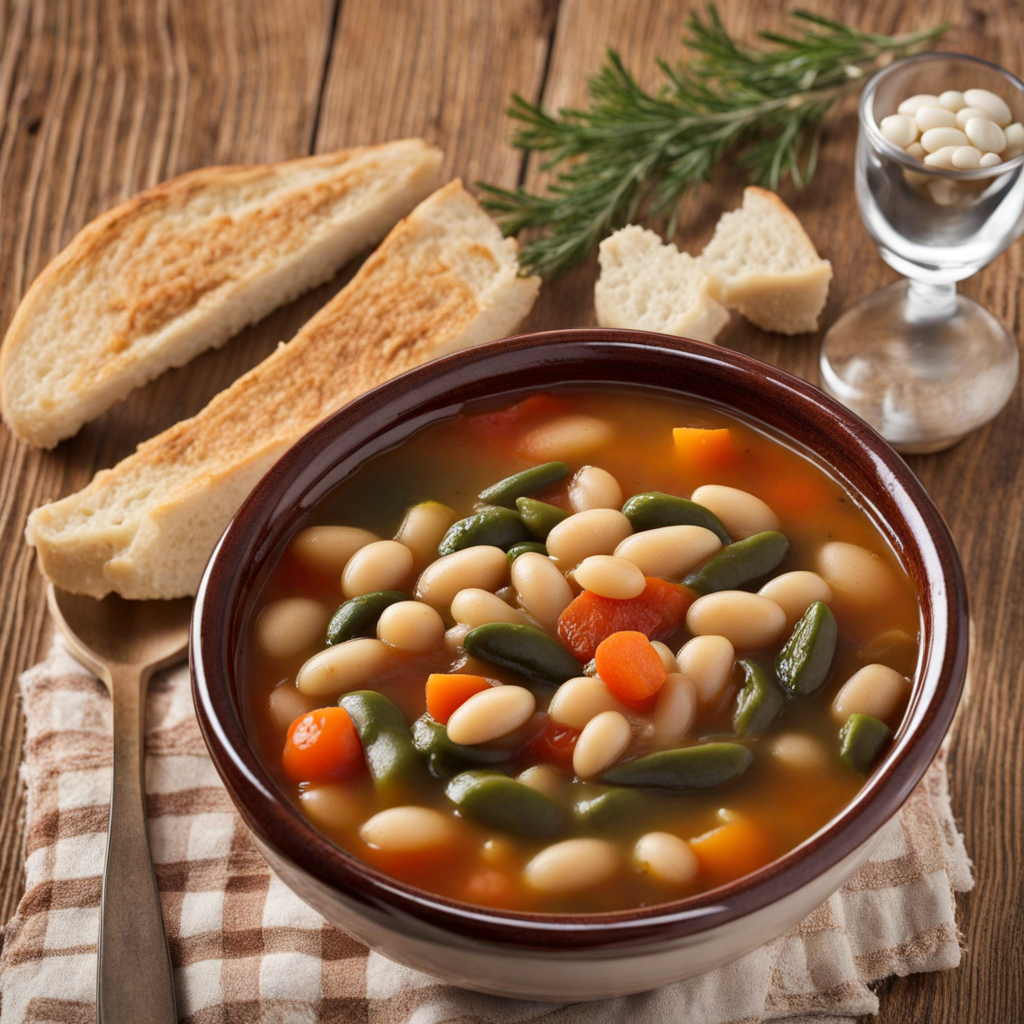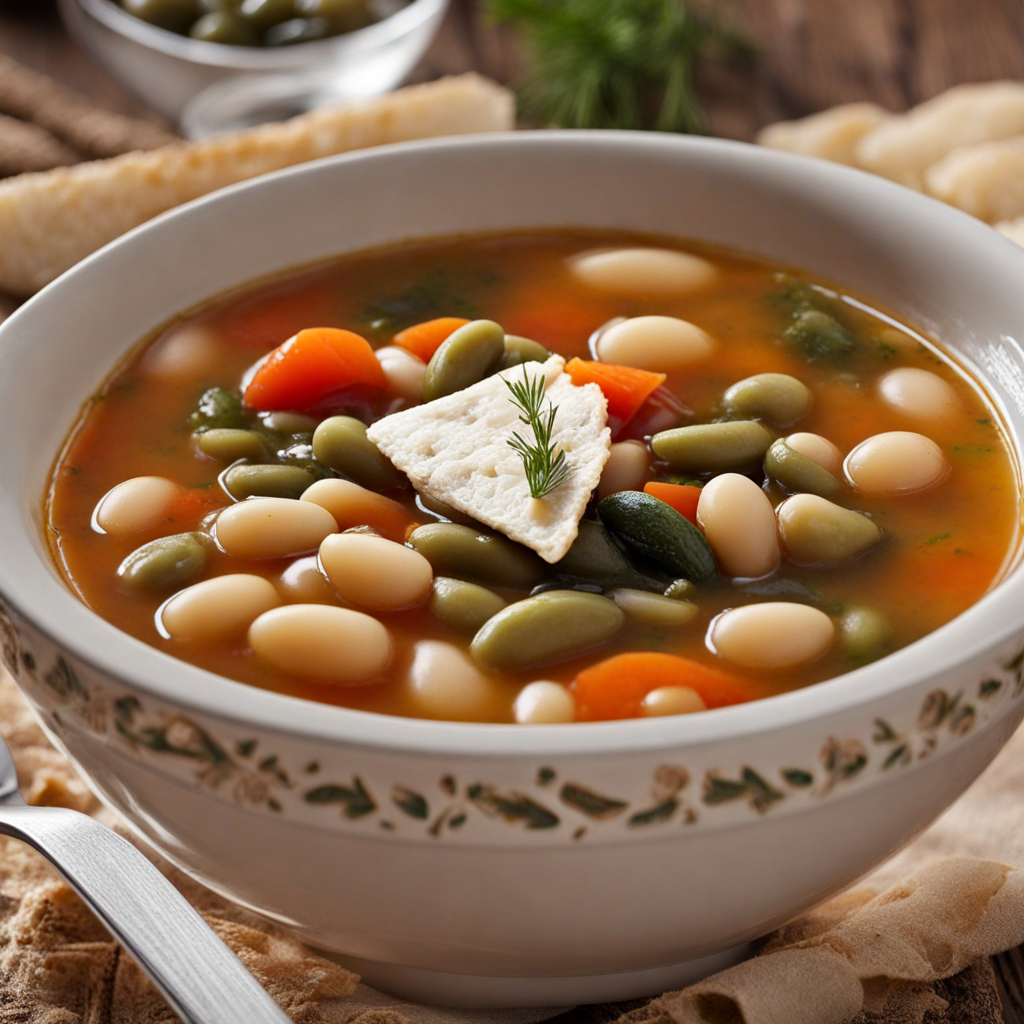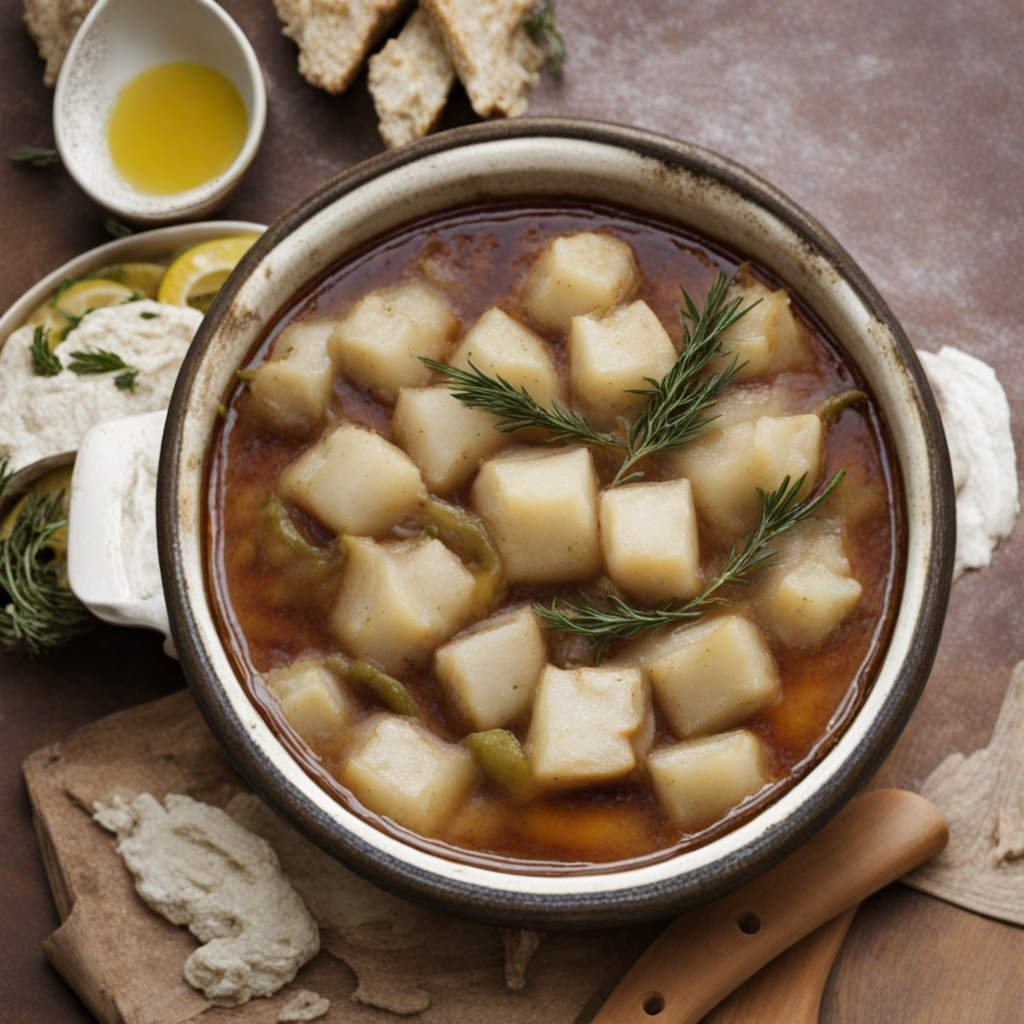Spanakopita
Spanakopita is a delightful savory pastry that hails from the rich culinary tradition of Cyprus, where the Mediterranean flavors come to life in each bite. At its core, spanakopita is composed of thin, flaky layers of phyllo dough, which encase a vibrant filling of fresh spinach, fragrant herbs, and creamy feta cheese. The combination of these ingredients creates a harmonious balance of earthiness and tanginess, making it a perfect dish for both vegetarians and those looking to explore new tastes. The preparation of spanakopita is an art in itself. The phyllo dough is meticulously layered to achieve a golden, crispy exterior, while the spinach filling is often enhanced with ingredients such as onions, dill, and lemon zest, adding depth and brightness to the overall flavor profile. Each bite reveals a satisfying crunch, followed by the soft and flavorful filling that evokes the essence of the Mediterranean. This dish is not only a treat for the taste buds but also a visual delight, as the golden-brown crust contrasts beautifully with the vibrant greens of the filling. Spanakopita can be enjoyed as a snack, appetizer, or even a light main course, making it versatile for any dining occasion. Whether served warm from the oven or at room temperature, it retains its deliciousness and charm. Pair it with a refreshing tzatziki sauce or a crisp salad for a complete meal experience. Discovering spanakopita is like taking a culinary journey to Cyprus, where the love for fresh ingredients and traditional recipes comes together in a flaky, flavorful delight that promises to tantalize your taste buds.
How It Became This Dish
The History of Σπανακόπιτα: A Culinary Treasure of Cyprus #### Origins Σπανακόπιτα, or spanakopita, is a savory pie that has become one of the quintessential dishes of Cyprus, though its origins can be traced to various regions in the Mediterranean. The word "spanakopita" is derived from the Greek words "σπανάκι" (spanaki), meaning spinach, and "πίτα" (pita), meaning pie. Though it is often associated with Greece, the dish has a rich and diverse history that reflects the broader culinary traditions of the Eastern Mediterranean. The roots of spanakopita can be linked to ancient agricultural practices in the region, where leafy greens were cultivated as staple foods. Spinach, in particular, was likely introduced to the Mediterranean through ancient trade routes and became a vital ingredient in local cuisines. Historical references to spinach can be found in texts from ancient Persia, and it eventually made its way to the Greek-speaking world. The combination of spinach with a variety of herbs and cheeses was a natural evolution in traditional cooking, leading to the creation of the beloved pie. #### Cultural Significance In Cyprus, spanakopita is not merely a dish; it embodies the island's culinary identity and cultural heritage. The pie reflects the rich tapestry of influences that have shaped Cypriot cuisine over the centuries, including Greek, Turkish, Middle Eastern, and even Italian elements. This melding of cultures is evident in the ingredients used, the cooking methods employed, and the occasion for which the dish is prepared. Spanakopita is often enjoyed as a meze, a small dish served as part of a larger feast, or as a comforting snack. It is commonly made for celebrations, family gatherings, and holiday feasts, such as Easter and Christmas. In Cypriot tradition, it is also common to prepare spanakopita during the Lenten season, when many people abstain from meat and dairy. The dish's versatility allows it to adapt to various dietary restrictions while still being flavorful and satisfying. In homes across Cyprus, spanakopita is often a family affair, with generations passing down recipes and techniques. Grandmothers are especially revered for their mastery of this dish, and many families have their own cherished variations. The preparation of spanakopita not only fosters a sense of community but also serves as an expression of love and care, making it a dish that transcends mere sustenance. #### Development Over Time As with many traditional foods, the recipe for spanakopita has evolved over time. While the core ingredients—spinach and feta cheese—have remained constant, regional variations have emerged based on local tastes and available resources. In Cyprus, it is common to include ingredients such as leeks, onions, and various herbs like dill or parsley, adding depth to the flavor profile. Some recipes also incorporate nutmeg, which adds a warm, aromatic quality to the filling. The crust of spanakopita is another area where variations arise. Traditionally, the pie is made with phyllo dough, which is known for its delicate, flaky texture. Phyllo pastry is a hallmark of many Mediterranean dishes and is believed to have been introduced to the region during the Ottoman Empire. While this thin pastry is the most prevalent choice, some Cypriots prefer a thicker, homemade dough, which results in a heartier pie. In the late 20th century, with the rise of globalization and the increased availability of international ingredients, spanakopita began to see even more adaptations. Some modern chefs have experimented with ingredients like ricotta or goat cheese, while others have embraced vegan alternatives, using plant-based substitutes to recreate the traditional flavors of the dish. These innovations reflect a broader trend in contemporary cooking, where chefs blend tradition with modern dietary preferences. #### Spanakopita in Contemporary Cypriot Cuisine Today, spanakopita holds a revered place in Cypriot cuisine and is often found on the menus of restaurants and tavernas across the island. It is commonly served alongside other traditional dishes, such as halloumi, koupepia (stuffed grape leaves), and various grilled meats. The dish's popularity extends beyond Cyprus; it has found its way into the culinary lexicon of Greek and Middle Eastern restaurants around the world, making it a beloved dish among international audiences. The rise of culinary tourism in Cyprus has also contributed to the resurgence of traditional dishes like spanakopita. Visitors to the island often seek out authentic dining experiences, leading to a renewed interest in the recipes and cooking techniques of local families. Cooking classes and food tours that focus on traditional Cypriot cuisine have become increasingly popular, allowing travelers to engage with the culture through food. Moreover, social media has played a significant role in the promotion of spanakopita and other traditional dishes. Food bloggers and influencers showcase their culinary creations, sharing recipes and inspiring home cooks to try their hand at making spanakopita. This digital age has fostered a revival of interest in traditional foods, encouraging people to explore their heritage and connect with their roots through cooking. #### Conclusion Σπανακόπιτα is more than just a delicious pie; it is a symbol of Cypriot culture and a testament to the island's rich culinary history. Its origins reflect the agricultural practices of ancient civilizations, while its evolution over time showcases the adaptability of traditional dishes in a modern context. As it continues to be celebrated in homes, restaurants, and beyond, spanakopita remains a beloved part of the Cypriot identity—connecting generations, enriching gatherings, and serving as a delicious reminder of the island's heritage. Whether enjoyed as a comforting snack or a centerpiece at a festive meal, spanakopita stands as a delicious embodiment of Cyprus's vibrant culinary landscape.
You may like
Discover local flavors from Cyprus







